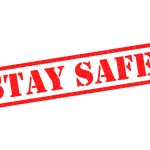
Winter can be a snowy time of year across the UK, so here are some essential safety tips from us!
Everyone loves the snow, but nothing dampens people’s love for snow like a workplace accident. You can build snowmen on the weekends but, during the week, consider some of our advice. Of course, rack safety inspections are a must and HSE racking regulations make it clear that you should have at least one SEMA racking inspection a year. Yet, there are also many other things you should look out for.
1. Keep an Eye on the Thermostat
Snow means particularly cold working conditions, especially if you’re in a warehouse. Obviously, this means wrapping up warm and encouraging your employees to do so as well. But more than that, you have a legal responsibility to keep your workplace warm. The law is not black and white about this. Rather, according to Workplace (Health, Safety and Welfare) Regulations 1992, employers have a legal responsibility to keep their workplace at a “reasonable” temperature.
HSE suggests that 16 degrees is a decent minimum. However, if the work in question involves rigorous physical effort, then it recommends 13 degrees. Keeping an entire warehouse at one temperature is going to be difficult and that’s why HSE allows employers leeway. However, employers are duty-bound “to determine what reasonable comfort will be in the particular circumstances”. In other words, your employees know that your warehouse might not be the warmest place in the world, but it’s your duty to try and make things as warm as possible.
2. Slips, Trips, and Falls.
You may think of slips, trips, and falls as things that “just happen”, but HSE and the law do not agree with you. HSE strongly believes that slips, trips and falls can be prevented and, as such, you are legally required to do a number of things. All of this is especially important during a snowy winter when icy floors can make things much more dangerous.
Firstly, you have a legal duty to control slip and trip risks “as far as is reasonably practicable” according to the Health and Safety at Work etc Act 1974 (HSW Act). Your employees also have a duty to not put themselves in danger and to use any safety equipment you may have provided for them. Secondly, the Management of Health and Safety at Work Regulations 1999 require you assess all risks (and this includes risks relating to slips, trips, and falls) and, “where necessary, take action to address them.” Finally, according to the Workplace (Health, Safety, and Welfare) Regulations 1992, you need to keep floors in a good condition and free from obstacles or obstruction. Your employees should be able to move around freely.
That’s what the law says, but what should you actually do? Well, as far as possible, HSE recommends making sure that ice doesn’t form on your workplace floors by keeping an eye on the temperature (as mentioned before). If ice does form, HSE recommends the use of grit, arbours to cover walkways and warning cones to divert people from the ice. Be sure to put the warning cones away once the danger is gone. Otherwise, as HSE points out, your employees will learn to ignore warning cones.
Be sure to use grit properly; don’t just throw it down and hope for the best. Also remember that, while grit may melt ice, it does nothing for damp floors. For that, you need more cones and signs to divert people, as well as something to dry up the wet floor if possible. On top of all this, decent lighting is vital. Without lots of light, it’s hard for people to judge whether a floor is wet, dry, icy, or just shiny.
3. Rack Safety Inspections
We mentioned earlier that HSE recommends a SEMA racking inspection at least once a year, but there are a number or reasons why rack safety inspections are especially important during the snowy winter months.
As temperatures hit their yearly low, steel and other metals are much more likely to reach their ductile to brittle transition temperature (DBTT). This is when a metal becomes so cold that it turns brittle, rather than ductile, and winds up snapping instead of bending. For racking systems, this type of damage could lead to fatal accidents, so it’s vital to keep an eye on it during the winter.
According to the University of New South Wales in Australia, “for some steels, the transition temperature can be around 0°C”. This means that, if your warehouse has ice on the floor, it’s possible that the steel in your warehouse is turning brittle and is already significantly weaker than it would be at a warmer temperature. It is yet another reason to keep an eye on the temperature in your warehouse and yet another reason to make sure that you have a racking inspection by a SEMA approved inspector.
Be sure to keep your warehouse warm and to have rack safety inspection this winter from a SEMA approved racking inspector.





